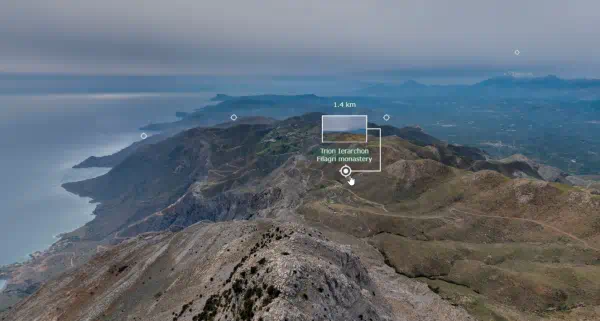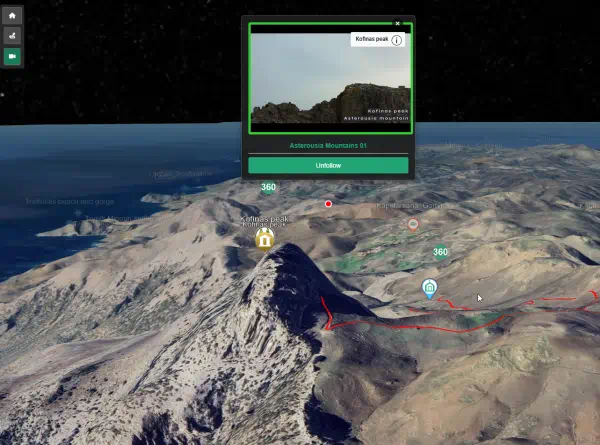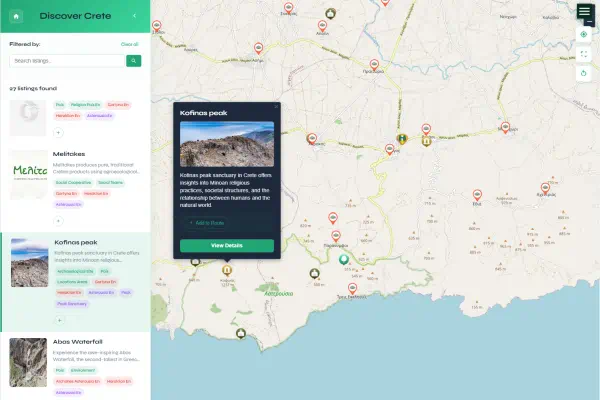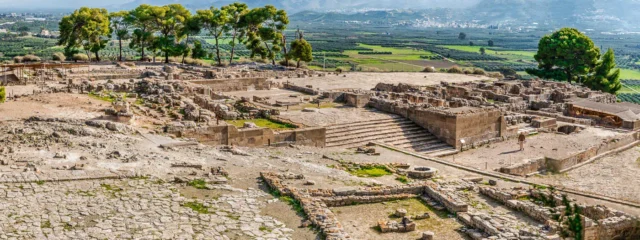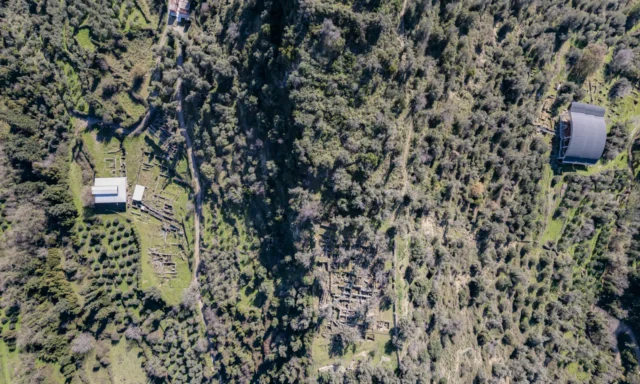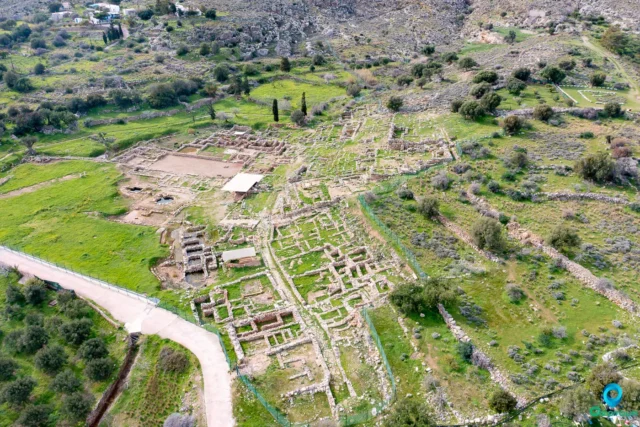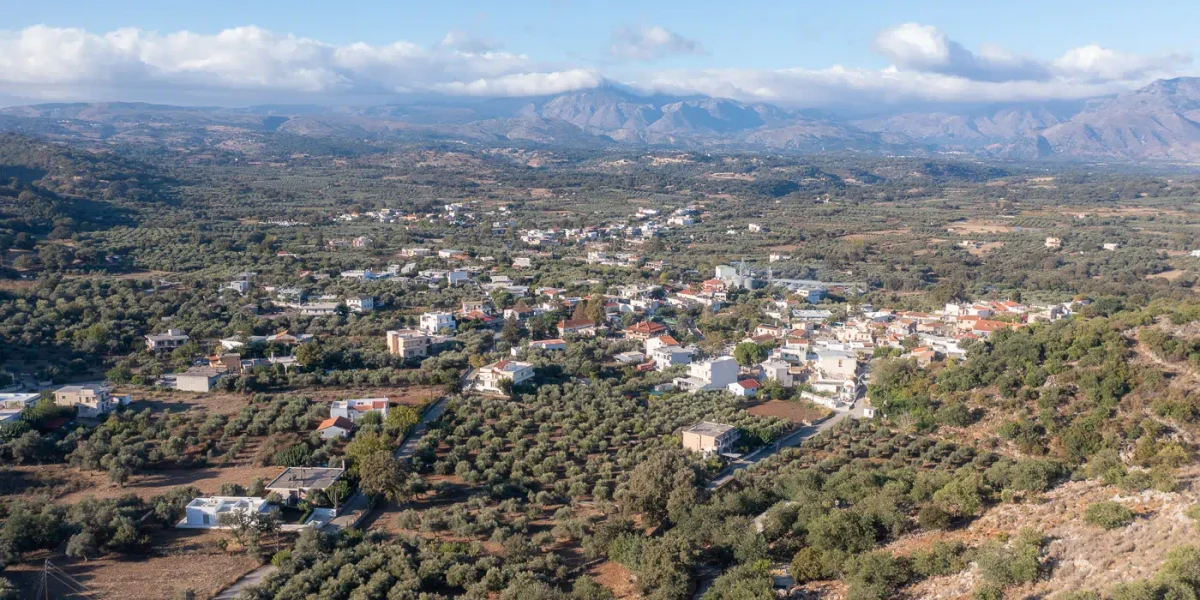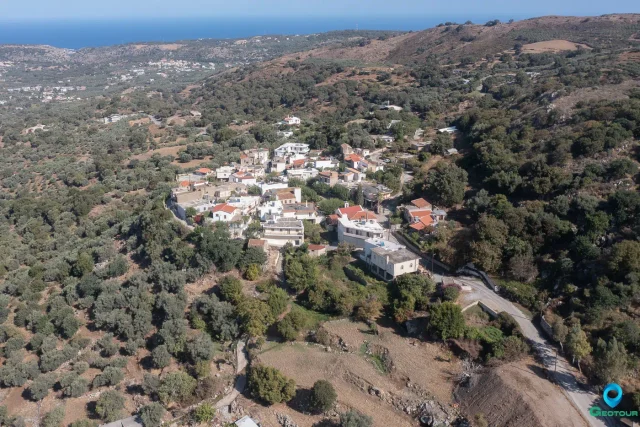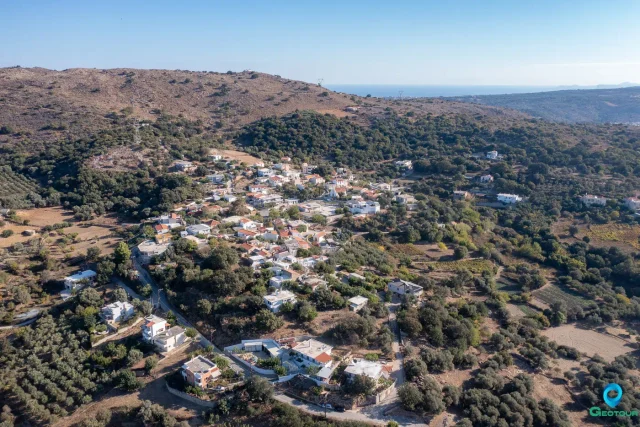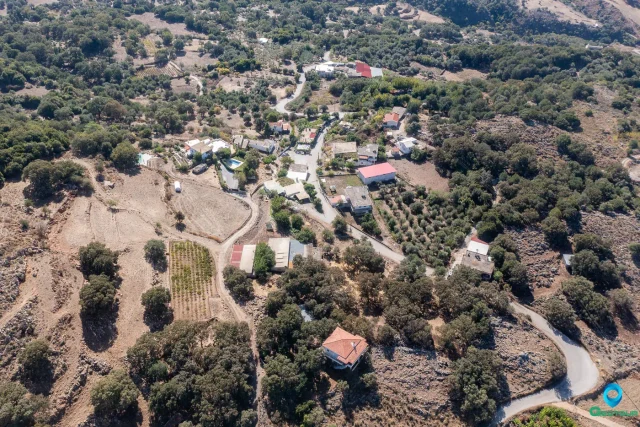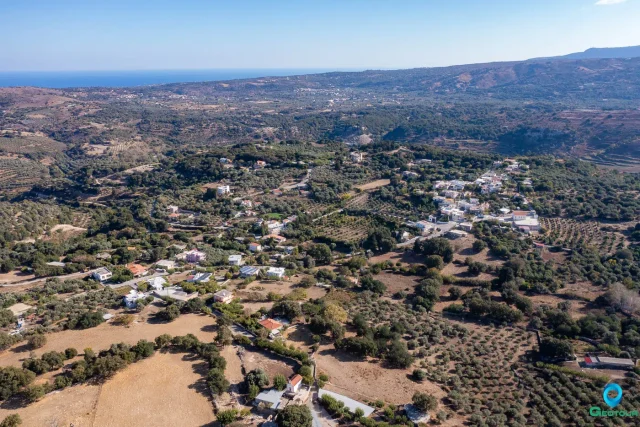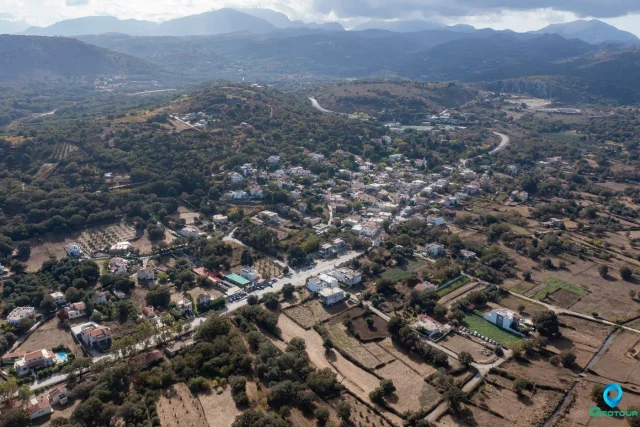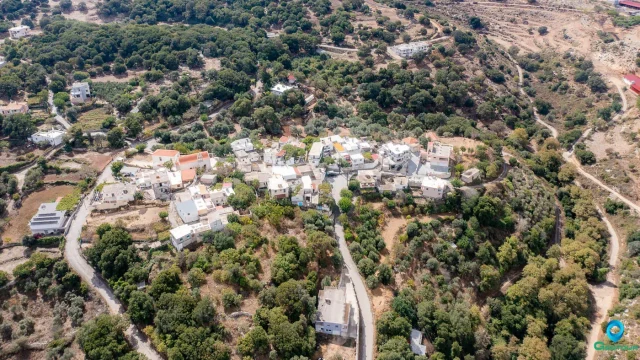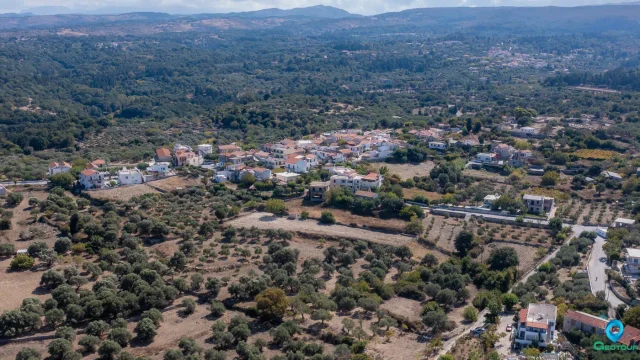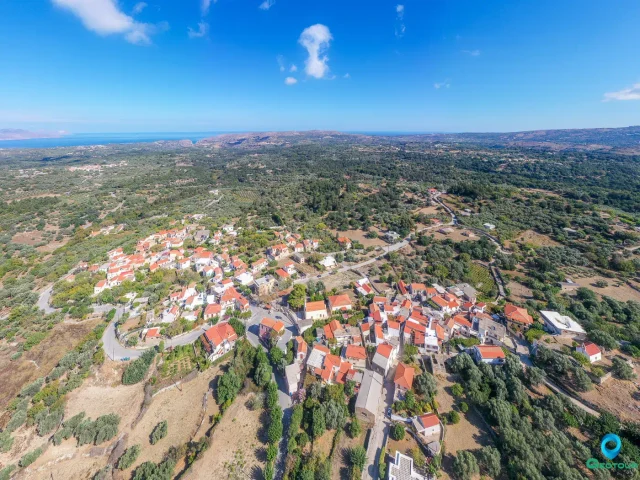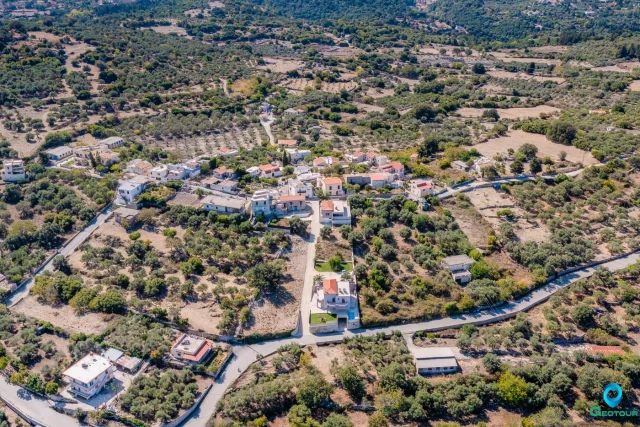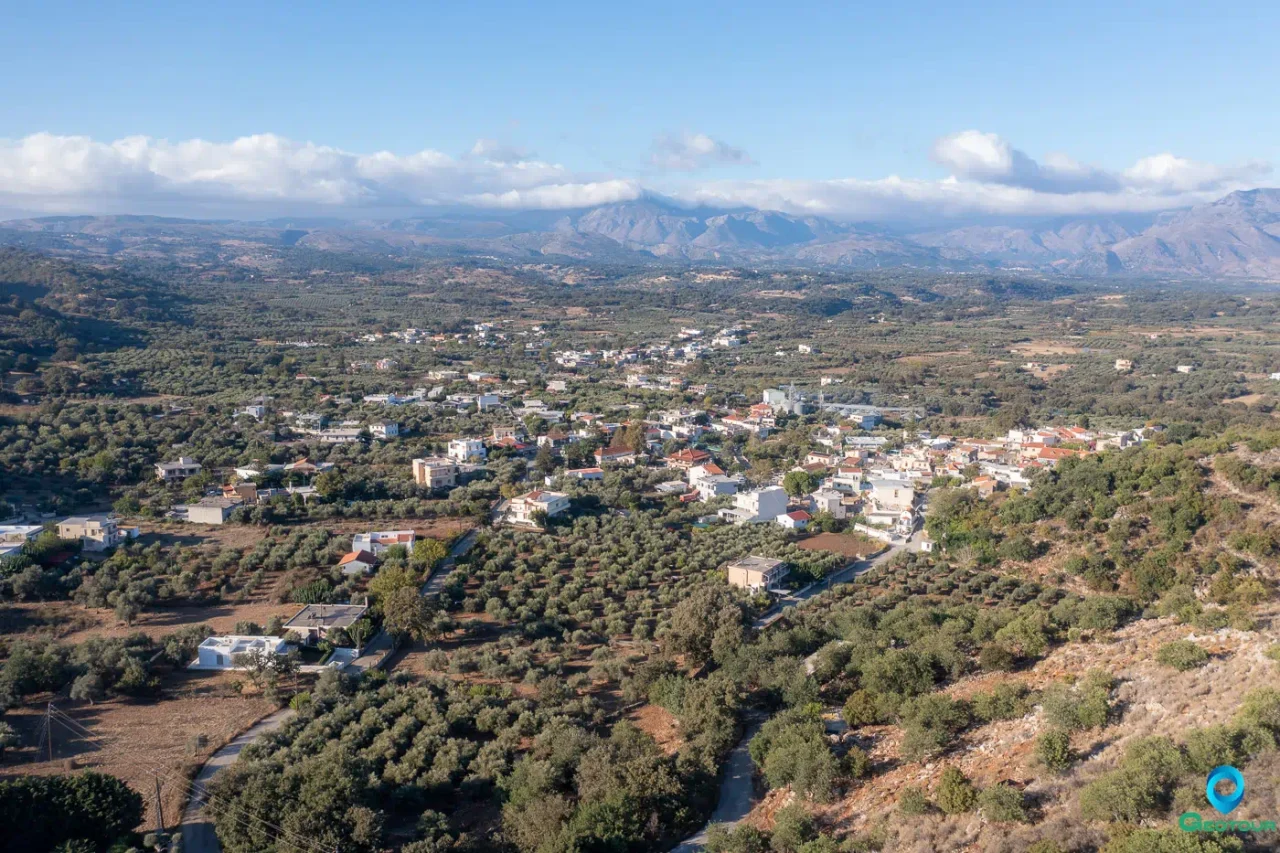
Gonia is a village and the seat of the homonymous community in the Municipality of Rethymno, located in the Regional Unit of Rethymno in Crete. It is situated 10.5 kilometers from the city of Rethymno at an altitude of 220 meters on a hill, providing an amphitheatrical view. The School of Tour Guides of Crete is based in Gonia.
Historical Information
The village was established during the 14th century by residents from surrounding areas. Its name, Gonia, is derived from its location at the edge (“gonia” in Greek) of a plain. It is also referred to as Mikri Gonia (Small Gonia) to differentiate it from Asi Gonia, which is also known as Megali Gonia (Big Gonia).
The village is first mentioned in 1577 by Francesco Barozzi as Gognamici. In the Venetian census of 1583, it is listed as Gogna with 121 inhabitants. In 1630, Francesco Basilicata referred to it as Micigogna. During the Ottoman period, Gonia was a center of revolutionary activity, which led to it being burned down three times by Ottoman forces in 1770, 1821, and 1866. Despite these destructions, the residents rebuilt the village each time.
Historically, Gonia was a predominantly Christian village, in contrast to some neighboring villages which had significant Turkish populations. The Egyptian census of 1834 recorded 25 Christian and 4 Turkish families. By the 1881 census, the village had 300 Christian inhabitants.
In 1925, Gonia became the seat of its own community. This status was maintained until the implementation of the Kapodistrian administrative reform, at which point the village was incorporated into the Municipality of Nikiforos Fokas and designated as its seat. The village has experienced considerable development since the 1990s, with new residents and the establishment of various businesses, including taverns, an animal feed factory, a cheese factory, and a bakery.
Churches and Monasteries
The main parish church is dedicated to Agios Ioannis the Theologos (Saint John the Theologian). It was renovated in 1887 and features a carved iconostasis with icons by the artist Ioannis Stathakis. According to local tradition, the original icons were hidden to save them from destruction by the Turks. One of these, an icon of Saint John the Baptist, was later found, restored, and placed in the church.
Other churches and chapels in the area include Koimisi tis Theotokou (Dormition of the Theotokos), Agia Kyriaki (Saint Kyriaki), Agios Antonios (Saint Anthony), and the cave church of Agioi Petros kai Pavlos (Saints Peter and Paul). The cemetery church is dedicated to Agia Eirini (Saint Irene).
Two historical monasteries, dedicated to Agia Eirini and Agia Anastasia, were located near the village, dating back to the late 15th century. These monasteries were destroyed by the Ottomans for their role in supporting Cretan revolutionaries. Local tradition holds that a large bell and other valuable religious items from the Monastery of Agia Anastasia were hidden in a well and have not been recovered. The monasteries were partially rebuilt around 1890 but were completely abandoned by 1905.
Culture and Traditions
The village’s cultural association is active in organizing local events. The primary festival takes place on August 15th in celebration of the Dormition of the Theotokos. Gonia has a history of traditional music, with several notable local musicians.
Local Musicians:
- Lyra players: Giannis Apostolakis (known as Kritikos), Giannis Mich. Daskalakis, Vangelis Kalaitzakis, Giannis Styl. Skalidis, Rafail K. Skalidis.
- Laouto players: Giorgis I. Apostolakis, Giannis D. Apostolakis.
Family and Social Life
A local football club, Aiantas Gonia-Ag. Andrea, was founded in 1997. The community also has a memorial dedicated to 34 residents who were killed or disappeared in conflicts between 1887 and 1949.
Common surnames in the village include Aktoudianakis, Androulidakis, Anagnostakis, Apostolakis, Vasilakis, Vasilopoulos, Vougioukalakis, Giannakakis, Daskalakis, Daskalomarkakis, Deligiorgis, Zoulakis, Kallitsounakis, Kontorinis, Kyriakakis, Kalaitzakis, Kotsyphakis, Litinas, Matthioudakis, Bernidakis, Bebis, Manousakis, Paximadis, Pervolianakis, Papargyriou, Polakis, Skalidis, Sfendylis, Spanoudakis, Tsamantakis, Fragiadakis, Fradelos, and Foustalierakis.
Notable People
- Markos Daskalakis and S. of Markos Daskalakis: Fighters in the Cretan Revolutions and World War I, respectively.
- Pavlos Daskalakis (or Zournas): A chieftain and plenipotentiary during the Cretan Revolutions.
- Dimitrios Pervolianakis: A group leader in the National Resistance.
Settlement: Key Points
- Location: 10.5 km from Rethymno, Crete, at an altitude of 220 meters.
- Historical References: First mentioned in 1577 as Gognamici. Known as Mikri Gonia (Small Gonia).
- Historical Significance: Participated actively in the Cretan Revolutions against the Ottoman Empire and was burned down three times (1770, 1821, 1866). It was the location of two historical monasteries, Agia Eirini and Agia Anastasia.
- Current Status: Seat of the Gonia community within the Municipality of Rethymno. It has experienced economic and population growth since the 1990s.
- Population Data:
Year | Population | Notes |
1583 | 121 | as Gogna |
1881 | 300 | Christians |
1900 | 379 | |
1920 | 285 | |
1928 | 287 | |
1940 | 323 | |
1951 | 325 | |
1961 | 282 | |
1971 | 198 | |
1981 | 211 | |
1991 | ||
2001 | 384 | |
2011 | 331 | |
2021 | 351 |

